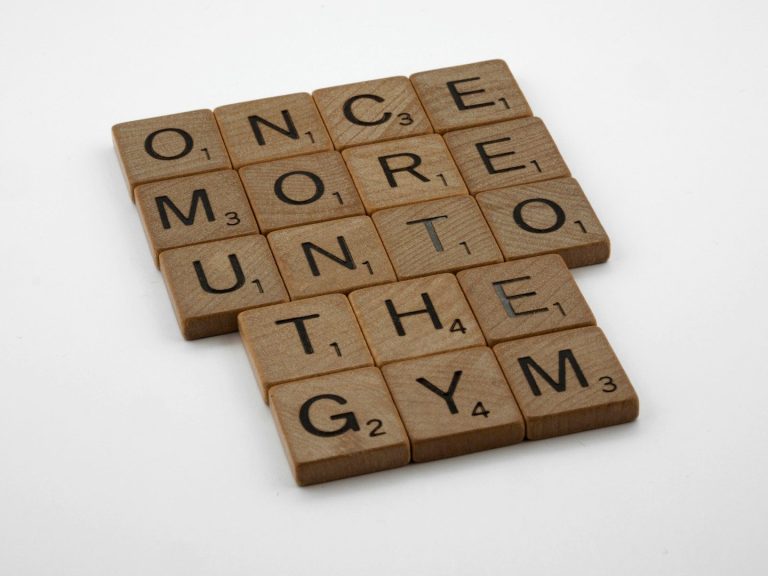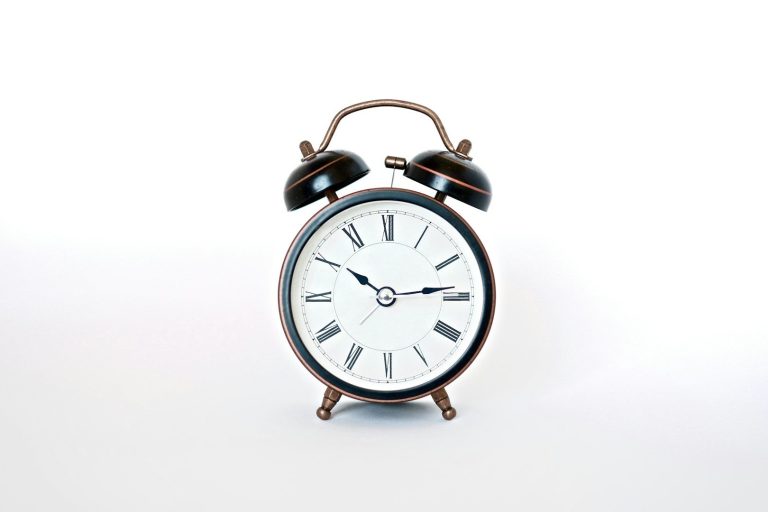But why train with weights?
Strength training may take 8 years off your biological age if you follow this one rule, new study reveals
The study revealed how long you should lift weights for and how many times a week to boost longevity
Strength training is the gold standard of exercise for looking after your joints, bones, and muscles as you age - but how long should you lift weights for? A new study has suggested a link between how often women lift weights and major longevity benefits.
Strength training, also known as weight training or resistance training, is so important for women. Several studies have shown this over the years but
this is the first one to pinpoint just how long you should lift weights for, how many times over one week, and what benefits to your biological age you can expect to see if you do it.
The study, published in the Journal of Biology (Basel), looked at just under 5000 men and women (with an average age of 42) to examine how strength training can affect the ageing process. Researchers that lifting weights three times a week can provide health benefits equal to being almost eight years younger - provided you do it for one hour each time.
How long should you lift weights for?
To save almost eight years from your biological age (7.8 years to be exact), researchers concluded that an hour of strength training three times per week, working out to 180 minutes total, is needed.
To complete the study, researchers looked at the length of participants' telomeres (protective DNA caps that prevent genetic material unravelling or being damaged) through blood samples. The participants were also asked how often they lifted weights.
As telomeres shorten with age and this shortening is associated with cell transformation that affects our health and lifespan, the longer the telomeres, the better. This study wanted to find out whether strength training could impact the length of these telomeres.
"In this national sample, 90 minutes per week of strength training was associated with 3.9 years less biological ageing, on average," the study found. "Because each year of chronological age was associated with telomeres that were 15.47 base pairs shorter in this national sample, 90 minutes per week of strength training was associated with 3.9 years less biological ageing, on average."
"This interpretation suggests that an hour of strength training three times per week (180 total minutes) was associated with 7.8 years less biological ageing."
However, the researchers also found that those who lifted weights for less than one hour per week also experienced benefits. They still had "significantly longer telomeres than the non-strength trainers", the study says, with at least 140 base pairs longer than those who did no strength training at all and less than 100 base pairs shorter than those who did the ideal amount of strength training.

I'm 40 plus - is there any point in exercising?
Turning 40 can feel like a turning point—both exciting and a bit daunting. If you’ve ever asked yourself, “Is there really any point to exercising at this age?” the answer is a resounding yes! Here’s why getting active is crucial, no matter your age.
1. Boost Your Metabolism
As we age, our metabolism tends to slow down. Regular exercise, especially strength training, can help counteract this. Building muscle not only helps burn more calories at rest but also keeps your body functioning optimally.
2. Maintain Independence
Want to keep up with your kids or enjoy activities like hiking or dancing? Staying active helps maintain strength, balance, and flexibility, making it easier to perform everyday tasks and enjoy life to the fullest.
3. Improve Mental Health
Exercise is a powerful mood booster. It releases endorphins, which can help reduce stress, anxiety, and depression. Staying active can keep your mind sharp, improve sleep quality, and boost your overall well-being.
4. Reduce Risk of Chronic Diseases
Regular physical activity lowers the risk of chronic conditions like heart disease, diabetes, and certain cancers. It can also help manage existing health issues, making exercise a vital component of disease prevention and management.
5. Social Connection
Joining a gym, fitness class, or sports team can help you meet new people and build friendships. The social aspect of exercising can provide motivation and support, making it easier to stick with your routine.

How are you?.... Are you really ok?
So, we all ask others How are you? in a slightly throwaway way and receive a multitude of replies mainly the one’s we expect such as “I’m ok”, “Things are Good” and “Could be Worse” to name but a few.
After this exchange both parties are generally ok with the outcome, and we go off to the next interaction.
However, what would happen if we made a slight change asked How are you…. really? and actively listened to the response? In the worst case we would receive the same standard non-committal response as above, but we might get the underlying real response such as “to be honest I’m struggling”, “I’m really worried about bills” or “things are really getting on top of me”.
Sometimes often people just need to know that the interest is genuine to be able to open up and tacitly seek help or just feel they are being heard or that in sharing the problem it just releases a little valve and there doesn’t seem to be as much of an unbearable pressure.
In turn you may learn what we all already know that all of us are struggling with the same things, too fat, not big enough, not rich enough, worry about your kids, worry about your mortgage, worry about not being enough and that although we all give the impression that we’ve got it all sorted for the main we are all feeling the same things.
The other thing to remember is that generally wherever we are is where our previous choices have put us!
On one hand that could be seen as demoralising because we’ve made all these bad choices and so have really failed but, if you take the accountability for them, it is also really empowering as you can always make a different choice and change your situation.
This doesn’t also mean you have to radically change in a short space of time it could be that you just have to make the choice to look at things through a slightly different lens, add in some gratitude for what you have and those feelings of being alone or facing insurmountable problems may just shift as well.
So how are you…. really?
& Remember in lifting others we rise!

I'm a 50 plus women why should i work and use a Personal Trainer
Training with a personal trainer on a one-to-one basis in a private facility offers several benefits tailored to your needs and comfort:
- Personalized Attention: A personal trainer provides undivided attention, designing workouts specifically for your goals, fitness level, and preferences, ensuring each session is effective and enjoyable.
- Comfort and Privacy: A private facility offers a more comfortable and intimate environment, reducing the anxiety and self-consciousness that can come with working out in a crowded gym.
- Customized Workouts: Your trainer will create a fitness plan that suits your individual needs, whether it’s weight loss, strength building, or improving overall health, making the experience more rewarding.
- Proper Form and Technique: Ensuring correct form and technique is crucial, especially as we age. A personal trainer will guide you through exercises safely, helping to prevent injuries and enhance results.
- Flexible Scheduling: Personal trainers in private facilities often offer more flexible scheduling, making it easier to fit workouts into your busy life.
- Accountability and Motivation: It’s easy to skip workouts when you’re on your own. A personal trainer provides the accountability and motivation needed to stay consistent and reach your fitness goals.
- Adaptability: If you have specific health concerns or physical limitations, a personal trainer can adapt exercises to accommodate these issues, ensuring a safe and effective workout tailored to your needs.
- Progress Tracking: Your trainer will monitor your progress and adjust your workout plan as needed, keeping you on track and motivated as you see improvements over time.
- Support and Encouragement: Beyond physical guidance, a personal trainer offers emotional support, helping you build confidence and maintain a positive mindset throughout your fitness journey.
- Holistic Approach: Personal trainers often provide guidance on nutrition, lifestyle changes, and healthy habits, empowering you to make informed decisions that benefit your overall well-being.
Choosing one-on-one training in a private facility can create a more comfortable, supportive, and personalized fitness experience, helping you achieve your goals while feeling at ease.

Navigating Rough Waters: How to Stay Motivated During Tough Times
In life, we all encounter stormy seas – those challenging times that test our resolve and shake our motivation to its core. Whether it's personal setbacks, professional hurdles, or unforeseen circumstances, maintaining motivation when the going gets tough can feel like trying to hold onto a slippery rope in a raging river. But fear not, for just as a skilled sailor adjusts their sails to weather the storm, we too can navigate through difficult times with resilience and determination. Here's how:
Embrace the Waves, Don't Fight Them: When faced with adversity, it's natural to want to resist and push back against the challenges. However, this resistance often leads to frustration and drains your energy. Instead, embrace the waves of difficulty as part of your journey. Accepting that rough patches are inevitable can help you maintain perspective and conserve your mental strength.
Focus on What You Can Control: In stormy weather, you can't control the wind or the waves, but you can adjust your sails. Similarly, during tough times, identify what aspects of the situation you have control over and direct your energy towards those. Whether it's your attitude, actions, or the choices you make, focusing on what you can influence empowers you to move forward despite the storm.
Seek Support from Your Crew: Just as a ship has a crew to rely on during turbulent times, surround yourself with a supportive network of friends, family, or mentors. Sharing your struggles with trusted individuals not only provides emotional comfort but also offers fresh perspectives and guidance. Together, you can weather the storm more effectively than trying to brave it alone.
Anchor Yourself in Purpose: When the seas are rough, it's easy to lose sight of your goals and aspirations. Remind yourself of your purpose – the reasons behind your journey and what drives you forward. Whether it's a desire to improve yourself, support your loved ones, or achieve your dreams, anchoring yourself in your purpose acts as a beacon of light guiding you through the darkness.
Celebrate Small Victories: In the midst of a tempest, even the smallest signs of progress are worth celebrating. Break down your goals into manageable tasks and acknowledge your achievements along the way. By recognizing your efforts, you not only boost your morale but also cultivate a sense of momentum that propels you forward, one step at a time.
Practice Self-Compassion: During challenging times, it's crucial to be kind to yourself. Avoid self-criticism and perfectionism, and instead, practice self-compassion. Treat yourself with the same kindness and understanding you would offer a friend facing similar struggles. Remember, setbacks are not failures but opportunities for growth and learning.
Visualize Clear Skies Ahead: While storms may rage fiercely, they eventually pass, making way for calm waters and clear skies. When the going gets tough, visualize a brighter future and hold onto the belief that better days are ahead. This optimism can fuel your perseverance and remind you that storms are temporary – but your resilience is enduring.
In the voyage of life, storms will come and go, but your ability to stay motivated amidst adversity defines your journey's course. By embracing challenges, focusing on what you can control, seeking support, anchoring yourself in purpose, celebrating victories, practicing self-compassion, and visualizing a brighter tomorrow, you can navigate through rough waters with unwavering determination and emerge stronger on the other side. So, set your sails high, brave sailor, for the journey ahead awaits – full of challenges, but also abundant with opportunities for growth and transformation. Bon voyage!

5 Daily Tips to support your weight loss
When it comes to weight loss, what you do every day really does matter more than what you do occasionally. A solid routine helps make healthy choices automatic, reduces decision fatigue, and keeps you consistent – even when life gets busy.
The great thing is, creating a healthy daily routine doesn’t have to mean dramatic changes or rigid rules. Small, realistic tweaks to your daily habits can make all the difference.
So, let’s dive in – here’s how to set yourself up for weight loss success from morning to night.
1 Start your day right with a balanced breakfast
While everyone’s different, most people will benefit from a balanced morning meal. Why? Skipping breakfast altogether, or grabbing something sugary on the go, can lead to energy crashes and mid-morning cravings. Instead, aim to eat a protein-rich, balanced meal within an hour or two of waking up to keep your hunger hormones steady and prevent overeating later in the day.
If you struggle to find time in the morning, try these speedy options:
- Greek yoghurt with berries and a handful of nuts.
- A boiled egg with wholegrain toast soldiers, spread with a little butter.
- Porridge with peanut butter and a light drizzle of honey.
Top tip: Log your breakfast before you eat – it can help you make a more mindful choice rather than grabbing the first thing in sight.
2 Plan ahead to avoid the lunchtime panic
Unfortunately, it’s all too easy to make less balanced choices when you’re hungry and unprepared – not to mention if you’re having a stressful day. If you’re grabbing a supermarket meal deal or ordering fast food at lunchtime, it can be hard to control portion sizes or calorie content.
Instead, try one of these approaches:
- The night before: Prep a protein + fibre + healthy fat lunch, like a chicken and wholegrain pasta salad with avocado.
- If buying lunch out: Check the calories in Nutracheck’s food database before you order.
- Feeling peckish in the afternoon? Keep snacks like hummus and veg, cottage cheese, or a handful of nuts nearby to prevent impulse buys.
Top tip: If you often feel like reaching for biscuits or chocolate in the afternoon, make sure your lunch has enough protein. This helps to keep blood sugar levels steady and reduces afternoon cravings.
3 Keep moving – especially in the afternoon slump
Mid-afternoon is a common time to feel like you’re running out of energy, and this tiredness can lead to snacking out of boredom rather than hunger. If you’re at home, a short 20-minute nap can help you reset and feel refreshed. Surprisingly, the opposite can also be true – a quick burst of movement can help you to feel more alert and curb sugar or carb cravings.
Try this when you feel that afternoon slump come on:
- After lunch, take a 10-minute walk before diving back into work.
- Working from home? Try standing up for calls or doing a few squats while the kettle boils.
- Commuting? Get off the bus one stop earlier or park further away to sneak in extra steps.
Top tip: Use a step tracker in the Nutracheck app to see how movement adds up throughout the day – every bit counts!
4 Curate your evening routine to prevent late-night snacking
The hours between dinner and bedtime can be the hardest to navigate. Whether you’re watching an engrossing TV show with snacks in hand, or eating out of habit rather than hunger, evenings can pose a real challenge to your weight loss goals.
Break the cycle with these tips:
- Craving something sweet? Have a herbal tea or a square of dark chocolate instead of reaching for the biscuit tin.
- Still feeling hungry? Check if your dinner included enough protein and fibre – if not, add extra veggies or lean protein next time.
- Avoid mindless munching by brushing your teeth early so you're less tempted to snack.
Top tip: If you’re under your calorie goal for the day or you’re hungry enough for an evening snack, go for something protein-based like Greek yoghurt, cottage cheese, or a boiled egg to keep you full overnight.
5 Prioritise sleep to make hitting your weight loss goals easier
Did you know? A bad night’s sleep can increase hunger hormones, making you crave high-calorie foods the next day. Poor sleep also affects metabolism and energy levels, making it harder to stay active and make good food choices.
Here’s how to create a sleep-friendly routine:
- Dim the lights as soon as you start to wind down for bed and keep your screen time to a minimum before bed.
- Avoid caffeine or alcohol before you sleep – try calming herbal teas (such as chamomile) that are naturally caffeine-free instead.
- Wind down with a book, podcast, or gentle stretching before bed.
Top tip: Track your sleep patterns and notice how they impact your hunger the next day – you might find a direct link!
Small changes add up over time
Building a daily routine that supports weight loss isn’t about completely overhauling your life – it’s about making small changes that fit into your day.
To begin with, start with one or two new habits, then build your healthy routine from there.
By focusing on structured meals, smart snacking, daily movement, and quality sleep, you’ll set yourself up for long-term success – without feeling restricted.
